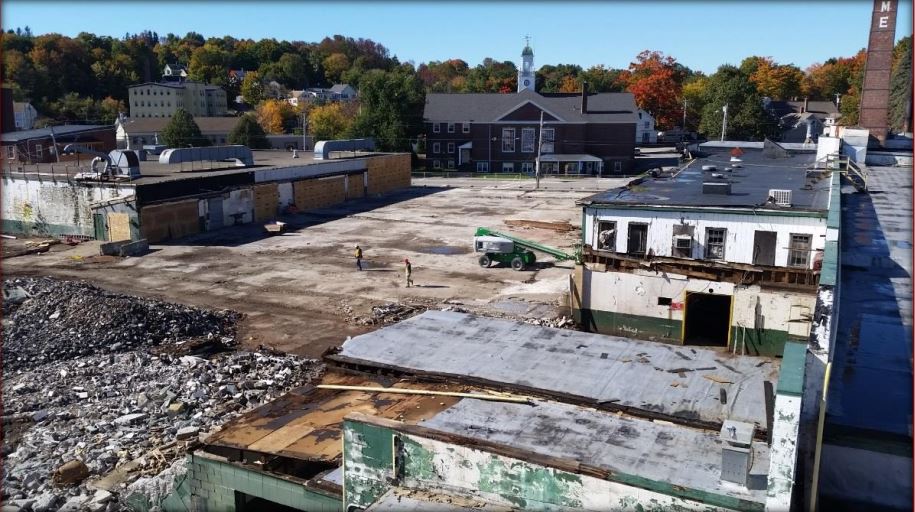The 7.7-acre main Prime Tanning facility and adjacent 2.8-acre parking lot are located in the center of downtown Berwick, Maine. It’s within a mixed residential and commercial area, and is currently owned by the Town of Berwick.
Tannery operations occurred at the site from approximately 1930 until 2008, when Prime Tanning closed and the owners filed for bankruptcy protection. In 2014, the town acquired the property for back taxes, which allowed Berwick to apply for EPA cleanup grants.
Fortunately, funds became available from the EPA Brownfields Grant Program — a program that provides funds to communities to assess, safely clean up and reuse a site. Berwick has secured $600,000 to date, and will hear soon if more funds will be granted. Cleaning up and reinvesting in these properties protects the environment, reduces blight and takes development pressures off greenspaces and working lands.
Now, with the approval of redevelopment initiatives on the November 8, 2016 ballot, a few more pieces have fallen into place, as Berwick tries to reinvent its downtown.
For nearly a decade the former Prime Tanning facility lay empty and decaying, dominating the landscape. But in the past few months a large section at the center of the complex has been torn down, making it possible–for the first time in many decades–to see across the complex from Town Hall to the fire station.
In the future, part of the cleared land could become an actual “Main Street” or pedestrian way with green space. The goal is revitalize its downtown while retaining its New England charm.
“Excitement is at an all-time high,” said James Bellissimo, Berwick’s community development and planning technician. “Being able to look at this as a complete blank slate to create a downtown from the ground up is a unique opportunity.” The 28-year-old Bellisimo also chairs Envision Berwick, a community development organization that has helped form a townwide vision for the future of the town.
Environmental conditions to be addressed at the site include the following:
- Surficial and accessible soil across the Site containing concentrations of polycyclic aromatic hydrocarbons (PAHs) and lead exceeding applicable residential and/or commercial Maine Department of Environmental Protection (DEP) Remedial Action Guidelines for Sites Contaminated with Hazardous Substances (RAGs);
- Buried solid waste fill materials identified across the Site including leather tannery scraps, wood chips, urban fill, ash/coal ash, and railroad ties. Contaminants associated with the fill materials include semi-volatile organic compounds (SVOCs) and metals;
- Naphthalene identified in groundwater on the Site exceeding applicable Maine Center for Disease Control (CDC) Maximum Exposure Guidelines (MEGs) for Drinking Water;
- Tetrachloroethylene (PCE), trichloroethylene (TCE), 1,3-butadiene, and chloroform identified in soil vapor at concentrations exceeding applicable residential and/or commercial soil gas targets (SGTs);
- Asbestos-containing building materials (ACM) documented to be present on and in the buildings at the Site;
- Mercury containing fluorescent lighting, PCB-containing light ballasts, and other universal/hazardous or other regulated wastes present at the Site.
See full Portland Press Herald article by Gillian Graham.
See full SeaCoastOnline article by Judi Curry.

